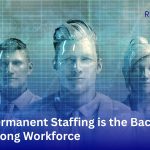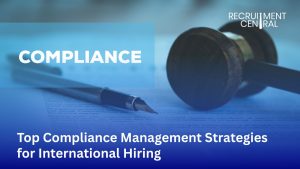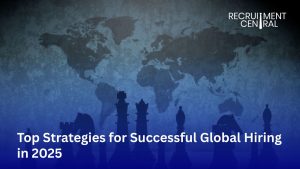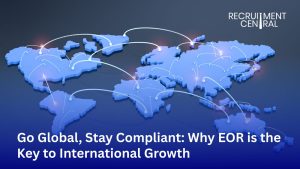Introduction
I was talking to an SME founder a few days ago, and he shared a painful story. He told me that he had hired a mid-level manager, who looked like the perfect fit on paper. But a few months later, the reality became totally different.
They missed deadlines, and mistakes started adding up. They had to replace the manager, and by the time they replaced him. The company had already lost hundreds of thousands of dollars in salary and training.
This is not something that is unusual. In Singapore, a single wrong hire at this level can cost you up to S$800,000 over time. 98% of CFOs admit that they have made at least one hiring mistake.
Force SMEs like his, and maybe like yours, where the budget is lean, and you have limited manpower, you don’t get the luxury of hiring twice. You have to hire once and hire right.
The High Cost of Hiring Errors
A bad hire does not just cost you money; it affects your entire business:
- Financial Drain: Think about it. Recruitment fees and the HR hours that go into the process can add up to 15 to 20% of the hire’s annual salary. On top of that, you are still paying months of salary to someone who is not performing.
- Lost Productivity: Most new hires are only about 25 to 65% effective in their first three months. If the person is not the right fit, they never really catch up, and you won’t be able to get lost time back.
- Team Disruption: One wrong hire can disrupt the entire rhythm of your team. Colleagues end up picking up the slack, and overall performance starts to suffer.
Also Read: Guide to Choosing the Right Talent Management System

Compliance and HR Challenges for SMEs
A bad hire is not only a problem for SMEs. There is a whole compliance side of things as well. Missing a step can lead to fines and unhappy employees. Here are some key obligations:
| Requirement | What SMEs Must Do | Deadline/Notes |
| CPF | Register for CSN & contribute monthly | Due by the last day of the month |
| Fair Employment | Follow Tripartite Guidelines | Avoid discriminatory ads/practices |
| Key Employment Terms | Include in all contracts | Salary, hours, leave entitlements |
| SDL & Insurance | Pay SDL & ensure WIC coverage | Mandatory for all employees |
| Payslips & Records | Issue payslips within 3 days | Keep records for 2 years |
| IRAS Filings | Submit IR8A, Appendix 8A annually | By March each year |
Why Permanent Staffing Support Works
Now the question arises, how does permanent staffing support help? Let me tell you how. This approach is about finding someone who fits your culture and is compliance-ready.
You can find somebody just like that if you have the right staffing partner or platform by your side. They can help you in a few key ways:
- Pre-screen and Shortlist Candidates: They will filter out resumes for you and bring you people who match your company culture.
- Ensure Compliance: Every candidate is checked to make sure they meet the legal and regulatory requirements.
- Save You Time: It saves you time because now your HR team does not have to spend hours going through the applications. It will be done for you.
The Local agencies hold a huge value. They specialise in retail logistics, healthcare, and tech industries, which are the areas SMEs struggle with. By tapping into these networks, you can expand your talent pool and avoid costly mismatches.
Integrated HR Solutions: The Efficiency Multiplier
Hiring right is only half the journey. Retaining compliance and efficiency after the hire is equally important.
| HR Challenge | With Manual Processes | With the Integrated HR System |
| Payroll & CPF Filing | 2–3 days/month, error-prone | A few hours/month, automated & accurate |
| Compliance Tracking | Spreadsheets & reminders | Built-in alerts & statutory updates |
| Employee Queries | Endless emails & calls | Self-service portal for payslips, leave, and claims |
| HR Time Spent | 70–80% on admin tasks | 20% or less, focus on strategy |
Also Read: What Is Employee Leasing? A Complete Guide for Businesses
Onboarding and Retention: Securing Long-Term Success
Now, let’s suppose you have nailed the hire. You got the perfect candidate for yourself, but the real test comes after they join. Onboarding can make or break whether someone actually stays.
For example, let’s talk about “Amy.” She was a new recruit and was excited to start, but within just two weeks, she quit. Why?
It was because nobody trained her, and she felt completely lost. The serious thing here is the cost of replacing her ended up being way higher than if the company had just supported her properly from day one.
That is why I always see the solution is simple: put in place a structured 30/60/90-day onboarding plan. It gives new hires clarity and makes them feel like they are part of the team right from the start.
Timeline
| Timeline | Focus |
| First 30 days | Paperwork, orientation, mentor assignment |
| 60 days | Training programs, performance check-ins |
| 90 days | Goal-setting, role clarity, and feedback loop |
With HR platforms, SMEs can automate reminders for paperwork, training, and reviews. This ensures no new hire slips through the cracks.

Quick Checklist: Hire Right Every Time
- Define role & requirements clearly
- Use staffing support for pre-screened candidates
- Automate contracts, CPF, and IRAS filings
- Set system reminders for all compliance deadlines
- Create a structured 30/60/90-day onboarding plan
- Monitor engagement and adjust as needed
Conclusion
At the end of the day, making the wrong hire is too costly for SMEs. Along with wasting money, it affects your whole team and even your company’s reputation if compliance mistakes happen.
That is why using permanent staffing support and good HR systems is the right thing to do. They help you hire the right people and stay compliant.
The message is simple: hire once, hire right, and let the right tools in partners handle the tough stuff.







